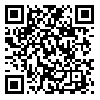Sun, May 25, 2025
[Archive]
Volume 10, Issue 1 (March 2014)
IJEEE 2014, 10(1): 55-64 |
Back to browse issues page
Download citation:
BibTeX | RIS | EndNote | Medlars | ProCite | Reference Manager | RefWorks
Send citation to:



BibTeX | RIS | EndNote | Medlars | ProCite | Reference Manager | RefWorks
Send citation to:
Darabi A, Yousefisefat M, Nikkhoo M. A Review on Modelling of the Maximum Lagging Current Test Method of Salient Pole Synchronous Machines. IJEEE 2014; 10 (1) :55-64
URL: http://ijeee.iust.ac.ir/article-1-574-en.html
URL: http://ijeee.iust.ac.ir/article-1-574-en.html
Abstract: (14701 Views)
Quadrature-axis reactance for various reasons comes into account as one of the most important parameters of salient pole synchronous machine. There are several common standard methods for measuring this parameter that also have been explained with some details in the standards, scientific papers and text books. One of these methods is the maximum lagging current test that is done simply at no-load, having a three phase voltage source and applying very low power even for a high power machine. How this experiment is done is described at some references such as the books related to electrical machinery. This paper presents a detail analysis and description of the test and some simulation results regarding the performance of the machine during pole-slipping. It is shown when the reversal field current is increased very slowly, the transient of the pole-slipping commences at load angle equal to 45 degrees or by a better language at 225 instead of zero which is the common opinion of almost all the previously published literatures. In this paper, a realistically developed analysis of the test is presented applying appropriate assumptions. The maximum lagging current test is then simulated applying a small salient pole machine with the rated 31.5 kVA using Matlab/Simulink. Some simulation results are illustrated that prove correctness and validity of the new analysis and the proof described by the present paper.
Keywords: Salient Pole Synchronous Machine Parameters , Quadrature-Axis Reactance , Maximum Lagging Current Test
Type of Study: Research Paper |
Subject:
modeling of Electrical Machinery
Received: 2013/05/07 | Revised: 2014/03/15 | Accepted: 2014/03/12
Received: 2013/05/07 | Revised: 2014/03/15 | Accepted: 2014/03/12
| Rights and permissions | |
 |
This work is licensed under a Creative Commons Attribution-NonCommercial 4.0 International License. |







